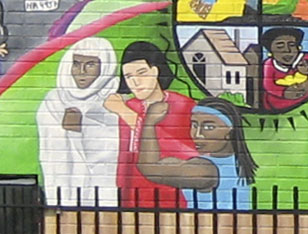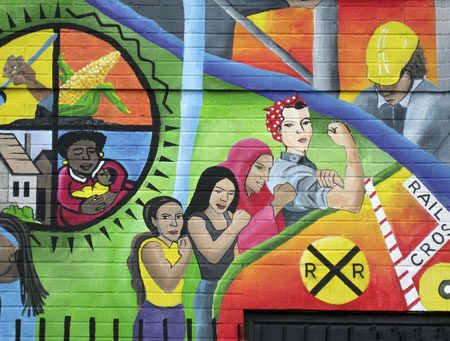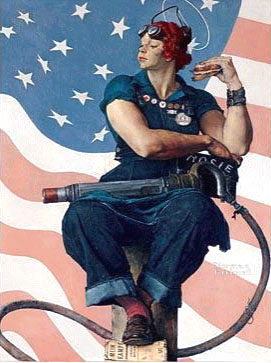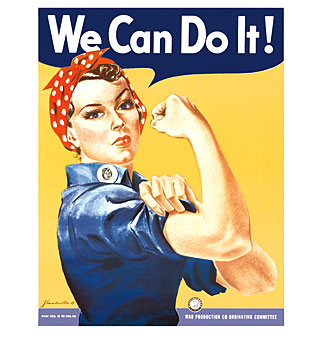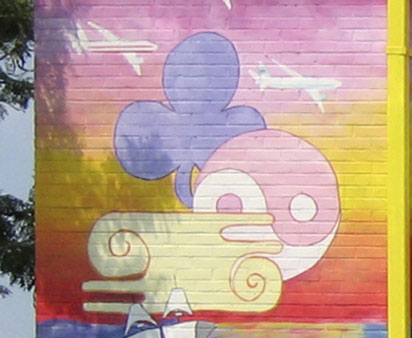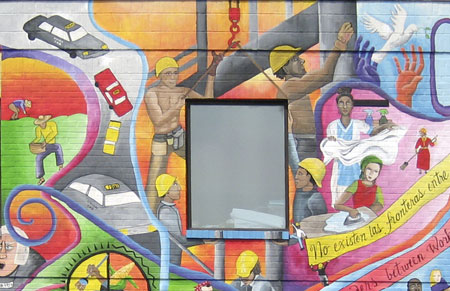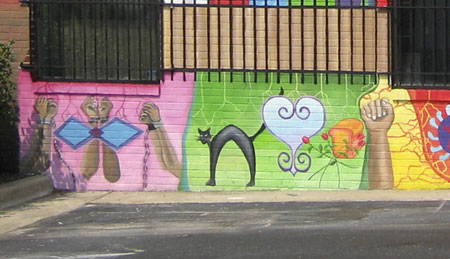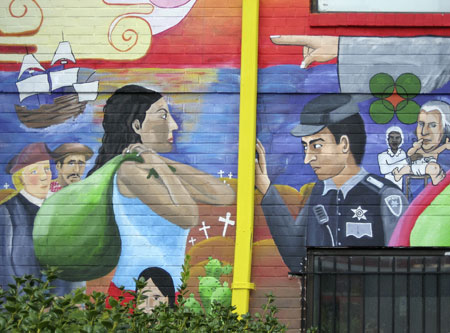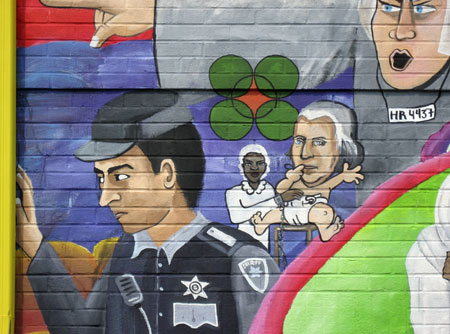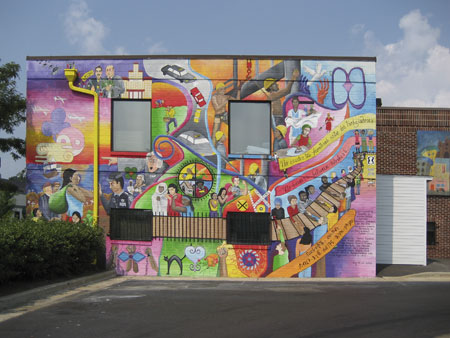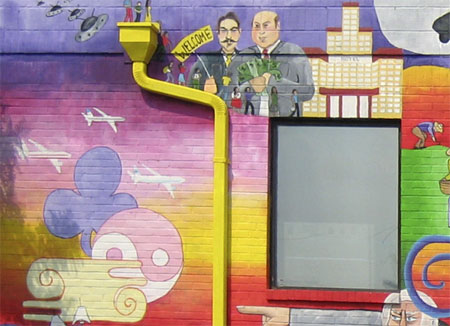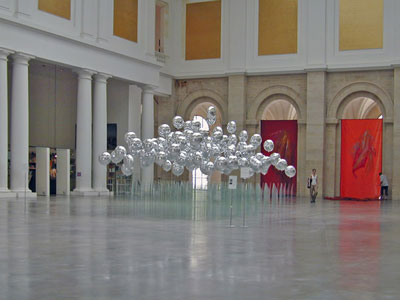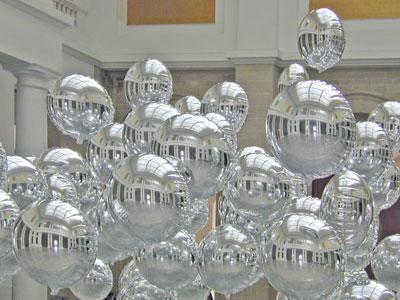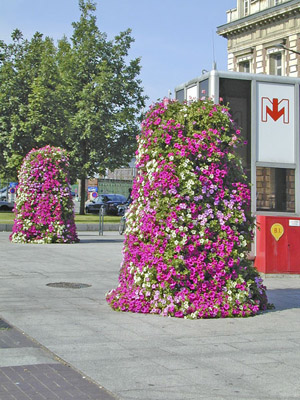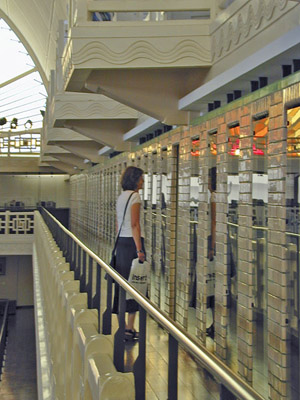Most people, when they think of sculpture in Trafalgar Square, think of Lord Nelson on his column. But there are other statues, and now that feeding the pigeons is illegal so the square isn’t knee-deep in birds, feathers, poop, people selling birdseed at outrageous prices, and tourists covered with pigeons, you can actually see them. At the four corners are statues of King George IV, Gen. Charles Napier, Maj. Gen. Sir Henry Havelock (yeah, I hadn’t heard of the two military gents either), and until fairly recently, an empty plinth. Back in the 1840s, the fourth plinth was paid for, but there wasn’t enough money for the statue.
In the late 1990s, the empty fourth plinth became home to a rotating series of temporary sculptures, which gave rise to the Fourth Plinth Project. The latest statue is Alison Lapper Pregnant, a 3.5 meter, 13 tonne sculpture of a British artist born with no arms and malformed legs, pregnant with her son. Lapper specializes in art portraying disabilities. The sculpture in Trafalgar Square is the work of Marc Quinn.
I wish I liked it. We spend too much time glorifying the latest ephemeral perception of physical perfection, so saying that a disabled person is equally worthy of celebration is something I applaud. But I don’t like this sculpture. It certainly personifies something I believe in intellectually, but when faced with the reality, my emotional response is boredom.
On first sight, I didn’t take in anything except a huge, glaring white sculpture of a nude female that didn’t fit with the rest of Victorian Trafalgar Square. I didn’t notice, until my friend pointed it out, that the statue had no arms (maybe I’m conditioned by the Venus de Milo). I think this is a very dull piece of sculpture, competent but (to me) uninspired. If the model had arms and perfect limbs and had not been pregnant, thereby meeting all sorts of levels of political correctness, would the statue have merited a place, however temporary, in Trafalgar Square?
And—I need to be totally honest— how much does my discomfort with the subject also weigh into this? I know it does.
But nobody asked my opinion, and Alison will be in situ only until the end of March 2007. In April, she’ll be replaced by Thomas Schütte’s Hotel for the Birds. Apparently no one mentioned to Herr Schütte that the pigeons are no longer welcome in Trafalgar Square.
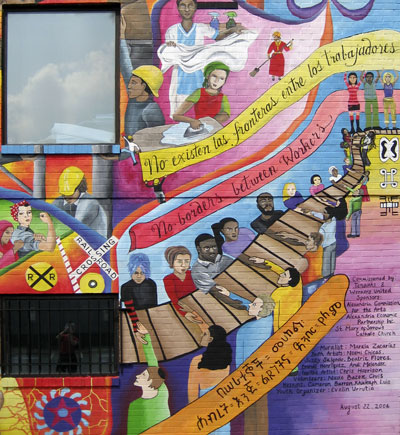
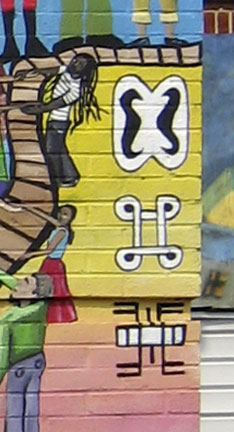
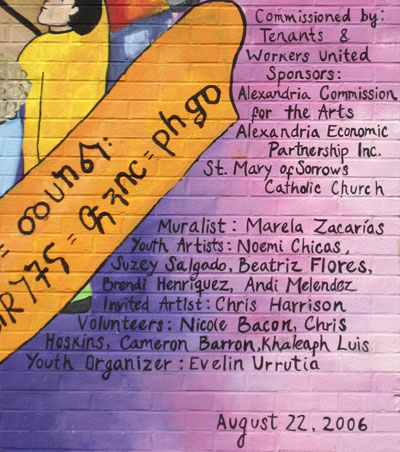



 Posted by Judith
Posted by Judith 